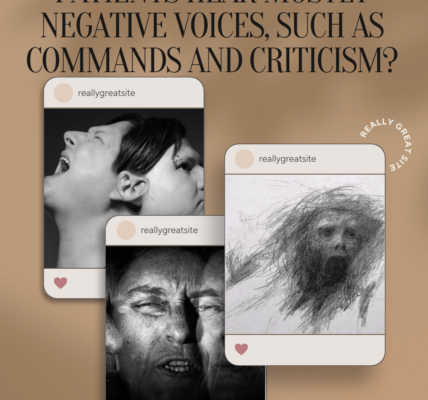Table of Contents
- Introduction
- Understanding Inner Dialogue
- Psychological Factors Influencing Inner Voices
- Personality
- Past Experiences
- Neurological Aspects of Inner Voices
- Brain Regions Involved
- Neurotransmitters and Cognitive Function
- Cultural and Environmental Influences
- Social Conditioning
- Language and Communication Styles
- The Role of Emotions in Inner Dialogue
- Connection Between Emotions and Inner Voices
- Managing Emotional Influences
- Psychiatric Perspectives on Inner Voices
- Healthy vs. Unhealthy Inner Dialogues
- Conditions Associated with Altered Inner Voices
- Philosophical Considerations
- Dualism vs. Materialism
- Subjectivity and Conscious Experience
- Technological Impact on Inner Voices
- Digital Media and Inner Dialogue
- AI and Inner Voice Simulation
- The Influence of Stress and Mental Health
- Stress as a Catalyst for Varied Inner Voices
- Link between Mental Health and Inner Dialogues
- Tips for Understanding and Managing Inner Voices
- Mindfulness Techniques
- Therapeutic Approaches
- Real-Life Examples
- Case Studies
- Personal Narratives
- The Future of Inner Dialogue Research
- Technological Advancements
- Interdisciplinary Collaboration
- Conclusion
Introduction
If you have ever wondered why the voice inside your head sometimes sounds like a mentor, a critic, or even a friend, you’re not alone. The phenomenon of varying inner voices during thinking processes is a fascinating aspect of human cognition that involves a complex interplay of psychological, neurological, and environmental factors.
Understanding Inner Dialogue
Inner dialogue, often referred to as “thinking aloud” in the mind, is a cognitive process where individuals engage in a conversation with themselves. This internal chatter can take on diverse tones, reflecting the multifaceted nature of human thought processes.
Psychological Factors Influencing Inner Voices
Personality
One’s personality significantly shapes the inner voices. Introverted individuals may have a more subdued inner dialogue, while extroverts might experience a more vocal and expressive internal conversation.
Past Experiences
Life experiences contribute to the development of inner voices. Traumatic events can lead to negative self-talk, while positive experiences may result in encouraging inner voices.
Also Read: Man who helped mom torture and starve autistic brother to death begs judge for ‘mercy’
Neurological Aspects of Inner Voices
Brain Regions Involved
Research indicates that the prefrontal cortex and the anterior cingulate cortex play crucial roles in generating inner voices. Understanding the neural basis of inner dialogue sheds light on its variability.
Neurotransmitters and Cognitive Function
Neurotransmitters like dopamine and serotonin influence cognitive function and, consequently, the nature of inner voices. Imbalances in these neurotransmitters can lead to altered thought patterns.
Cultural and Environmental Influences
Social Conditioning
Cultural background and societal norms contribute to the formation of inner voices. Cultural conditioning can influence the language, tone, and content of one’s internal dialogue.
Language and Communication Styles
The language spoken and the communication styles prevalent in one’s environment can affect the diversity of inner voices. Bilingual individuals may experience a fusion of languages in their thoughts.
Also Read: Venezuelan migrant who entered US illegally charged with raping teen girl in Virginia
The Role of Emotions in Inner Dialogue
Connection Between Emotions and Inner Voices
Emotions play a pivotal role in shaping inner voices. Happiness, sadness, anger, and fear can manifest as distinct voices, reflecting the emotional landscape of an individual.
Managing Emotional Influences
Developing emotional intelligence and coping mechanisms can help individuals navigate and manage the influence of emotions on their inner dialogue.
Psychiatric Perspectives on Inner Voices
Healthy vs. Unhealthy Inner Dialogues
While a range of inner voices is a normal part of human cognition, persistent negative or harmful thoughts may indicate underlying mental health issues. Seeking professional help is crucial in such cases.
Conditions Associated with Altered Inner Voices
Certain psychiatric conditions, such as schizophrenia and bipolar disorder, can lead to altered and disruptive inner dialogues. Understanding these conditions is essential for effective diagnosis and treatment.
Philosophical Considerations
Dualism vs. Materialism
Philosophical perspectives on the mind-body problem contribute to the discourse on inner voices. Dualistic views posit a separation between mind and body, influencing how individuals perceive their inner dialogue.
Subjectivity and Conscious Experience
The subjective nature of consciousness adds complexity to inner voices, raising philosophical questions about the nature of self-awareness and thought.
Technological Impact on Inner Voices
Digital Media and Inner Dialogue
The digital age has introduced new elements to inner voices, with the constant exposure to digital media influencing thought patterns and internal narratives.
AI and Inner Voice Simulation
Advancements in artificial intelligence raise intriguing questions about the potential for simulating and even altering inner voices through technology.
The Influence of Stress and Mental Health
Stress as a Catalyst for Varied Inner Voices
High-stress levels can intensify inner voices, leading to heightened anxiety and self-critical thoughts. Understanding stressors is crucial for managing these challenging periods.
Link between Mental Health and Inner Dialogues
Maintaining mental health is essential for a balanced inner dialogue. Practices like mindfulness and self-reflection can positively impact mental well-being.
Tips for Understanding and Managing Inner Voices
Mindfulness Techniques
Practicing mindfulness can enhance awareness of inner voices, allowing individuals to observe and understand their thought patterns without judgment.
Therapeutic Approaches
Therapeutic interventions, such as cognitive-behavioral therapy (CBT), provide effective strategies for addressing and reshaping negative inner voices.
Real-Life Examples
Case Studies
Exploring real-life case studies provides insight into how diverse inner voices can manifest and impact individuals in unique ways.
Personal Narratives
Sharing personal narratives helps humanize the experience of varied inner voices, fostering empathy and understanding among individuals.
The Future of Inner Dialogue Research
Technological Advancements
Advancements in neuroimaging and cognitive science hold the potential to deepen our understanding of inner dialogue and its underlying mechanisms.
Interdisciplinary Collaboration
Collaboration between psychologists, neuroscientists, philosophers, and technologists will contribute to a holistic understanding of the complexities of inner voices.
Conclusion
In conclusion, the diversity of inner voices during thinking processes is a rich tapestry woven from psychological, neurological, cultural, and environmental threads. Embracing the complexity of our internal dialogue enhances self-awareness and contributes to a more nuanced understanding of human cognition.






1 COMMENTS